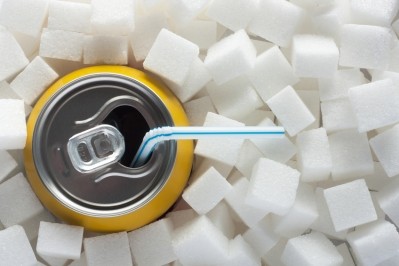Food industry must slash sugar – not just tinker

Writing in the journal Public Health Nutrition, Annie S. Anderson of the University of Dundee’s Centre for Public Health Nutrition Research argues that promoting reduced consumption of high-sugar foods should be the primary strategy for reducing population-wide sugar intakes – while reformulation must significantly cut sugar and calories.
““To achieve serious reduction in free sugars intake, the food industry must now work towards significant reductions in the sugar content of foods without increasing fat intake,” she wrote. “Tinkering over small reductions in the sugar content in foods/drinks that fundamentally remain high-sugar foods/drinks is unlikely to achieve the desired levels of sugar reduction in the near future.”
Her commentary comes in the wake of advice from the World Health Organisation (WHO) earlier this year to reduce consumption of added (or ‘free’) sugars to account for less than 5% of total caloric intake – down from its earlier advice that sugar should account for no more than 10% of total calories. For an average, normal weight adult, this is equivalent to about 25 g or about six teaspoons of sugar. A standard can of soft drink may contain up to 40 g or 10 teaspoons of sugar.
Anderson pointed out that there is no dietary requirement for free sugars. However, the average person in the UK consumes about 15% of their calories in the form of added sugars, and Anderson acknowledges that dietary advice alone is unlikely to make a big difference.
Avoiding unintended consequences
“Effective risk management is likely to need approaches which embrace consumers, the food supply chain and the consumer food environment,” she said, adding that any strategy to promote replacement of added sugars should be careful to promote wholegrain starches, and sugars from fruit and milk. Otherwise, replacement of sugars by foods high in saturated fat could be an unintended consequence of such messages.
“Marketing messages and endorsement of ‘lower sugar content’ in foods that remain high in sugar may detract from more basic strategies aimed at avoiding regular consumption of these products in their current portion size,” she wrote.
“In other words, reducing consumption of sugar, preserves and confectionery, biscuits, buns and cakes should be the main strategy to reduce sugar intake overall, rather than maintaining high consumption of lower-sugar-content versions of these same foods.
“Importantly, consumption of sugar-sweetened beverages does not easily fit within a healthy diet and intakes should be minimal.”
Source: Public Health Nutrition
Vol. 17 Iss. 10, pp. 2148–2150 doi:10.1017/S1368980014001839
“Invited Commentary: Sugars and health – risk assessment to risk management”
Author: Annie S. Anderson


























